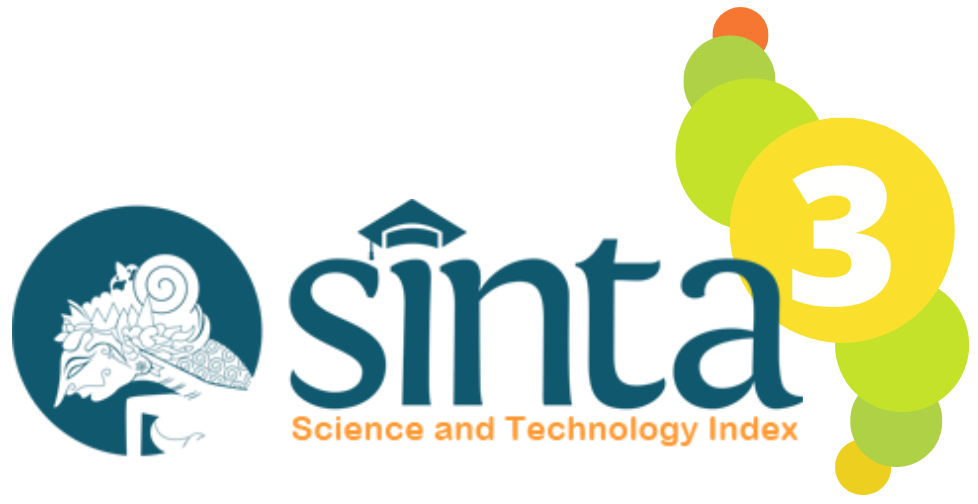Keberfungsian Keluarga dan Kesepian pada Lansia di Jabodetabek
DOI:
https://doi.org/10.35814/mindset.v15i01.5477Kata Kunci:
keberfungsian keluarga, kesepian, lansiaAbstrak
Meningkatnya populasi lansia di Indonesia juga diiringi dengan meningkatnya tingkat kesepian pada lansia. Kesepian yang dirasakan lansia tidak lepas dari peran keluarga. Tujuan penelitian ini ingin mengkaji hubungan keberfungsian keluarga dengan kesepian pada lansia. Penelitian ini merupakan penelitian kuantitatif dengan desain korelasional. Instrumen yang digunakan untuk mengukur keberfungsian keluarga dalam penelitian ini adalah General Functioning Family Assessment Device (α=0,81). Sedangkan alat ukur yang digunakan untuk mengukur kesepian dalam penelitian ini adalah UCLA Loneliness Scale version 3 (α=0,87). Sampel penelitian ini adalah sebanyak 100 lansia yang berdomisili di Jabodetabek direkrut melalui snowball sampling. Hasil penelitian ini menemukan bahwa keberfungsian keluarga memiliki hubungan negatif yang signifikan dengan perasaan kesepian pada lansia yang berdomisili di Jabodetabek. Pada penelitian ini ditemukan juga bahwa terdapat perbedaan kesepian pada lansia berdasarkan keikutsertaan komunitas dan status kerja.
Referensi
Byles, J., Byrne, C., Boyle, M. H., & Offord, D. R. (1988). Ontario child health study: Reliability and validity of the General Functioning Subscale of the McMaster Family Assessment Device. Family Process,27(1), 97- 104. https://doi.org/10.1111/j.1545-5300.1988.00097.x
Cao, X., Jiang, X., Li, X., Lo, M.-c. J. H., & Li, R. (2013). Family functioning and its predictors among disaster bereaved individuals in China: eighteen months after the Wenchuan earthquake. PloS ONE, 8(4),1- 8. https://doi.org/10.1371/journal.pone.0060738
Coyle, C. E., & Dugan, E. (2012). Social isolation, loneliness and health among older adults. Journal of Aging and Health, 24(8), 1346–1363. https://doi.org/10.1177/0898264312460275
Dai, L., & Wang, L. (2015). Review of family functioning. Open Journal of Social Sciences, 03(12), 134–141. https://doi.org/10.4236/jss.2015.312014
Du, N., Ran, M., Liang, S., Situ, M., Huang, Y., Mansfield, A.K., & Keitner, G. (2014). Comparison of family functioning in families of depressed patients and nonclinical control families in China using the Family Assessment Device and the Family Adaptability and Cohesion Evaluation Scales II. Annals of Clinical Psychiatry, 26(1), 47-56. PMID: 24501730.
Eisenhardt, K. M., & Martin, J. A. (2000). Dynamic Capabilities: What are they? Strategic Management Journal Strat. Mgmt. J, 21.
Epstein, N. B., Baldwin, L. M., & Bishop, D. S. (1983). The McMaster Family Assess-ment Device.. Journal of Marital and Family Therapy, 9(2).
Feinberg, M.E., Mogle, J.A., Lee, J.., Tornello, S.L., Hostetler, M.L., Cifelli, J.A., Bai, S., & Hotez, E. (2021). Impact of the COVID-19 pandemic on parent, child, and family functioning. Family Process, 61(1), 361- 374.https://10.1111/famp.12649
Fokkema, T., De Jong Gierveld, J., & Dykstra, P. A. (2012). Cross-national differences in older adult loneliness. Journal of Psychology: Interdisciplinary and Applied, 146(1–2), 201–228. https://doi.org/10.1080/00223980.2011.631612
Hao, G., Bishwajit, G., Tang, S., Nie, C., Ji, L., & Huang, R. (2017). Social participation and perceived depression among elderly population in South Africa. Clinical Interventions in Aging, 12, 971–976. https://doi.org/10.2147/CIA.S137993
Hawkley, L. C., & Cacioppo, J. T. (2010). Loneliness matters: A theoretical and empirical review of consequences and mechanisms. Annals of Behavioral Medicine, 40(2), 218–227. https://doi.org/10.1007/s12160-010-9210-8
Hidayati, D.S. (2018). Family functioning dan loneliness pada remaja dengan orang tua tunggal. Jurnal Ilmiah Psikologi Terapan, 6(1), 54-62
Holtom-Viesel, A., & Allan, S. (2014). A systematic review of the literature on family functioning across all eating disorder diagnoses in comparison to control families. In Clinical Psychology Review (34(1),pp. 29- 43).https://doi.org/10.1016/j.cpr.2013.10.005
Janhaque, V. R., Blanco, A. L., Santos-Orlandi, A. A. dos, Brito, T. R. P. de, & Nunes, D. P. (2022). Social support and family functioning: a cross-sectional study of older people in the context of COVID-19. Revista Brasileira de Geriatria e Gerontologia,25(6). https://doi.org/10.1590/1981-22562022025.220129.en
Jayani, D.H. (2021, November 3). Jumlah lansia Jakarta diproyeksi capai 1,2 juta jiwa pada 2025. Katadata.co.id. https://databoks.katadata.co.id/datapublish/2021/11/03/jumlah-lansia-jakarta-diproyeksi-capai-12-juta-jiwa-pada-2025
Kiecolt-Glaser, J., Ricker, D., George, J., Messick, G., Speicher, C.E., Garner, W., & Glasser, R. (1984). Urinary cortisol levels, cellular immunocompetency, and loneliness. Psychosomatic Medicine, 46(1), 15-23. http://10.1097/00006842-198401000-00004
Knutson, K. & Woszidlo, a. (2014). The associations between family disengagement, support, loneliness, and stress in young adults attending college. Family Science, 5(1), 20-29. https://doi.org/10.1007/s12144-016-9512-5
Miller, I. W., Ryan, C. E., Keitner, G. I., Bishop, D. S., & Epstein, N. B. (2000). The McMaster approach to families: theory, assessment, treatment, and research. In Journal of Family Therapy , 22.
Pettigrew, S., & Roberts, M. (2008). Addressing loneliness in later life. Aging and Mental Health, 12(3), 302–309. https://doi.org/10.1080/13607860802121084
Pinquart, M., & Sörensen, S. (2001). Influences on loneliness in older adults: A meta-analysis. Basic and Applied Social Psychology, 23(4), 245–266. https://doi.org/10.1207/S15324834BASP2304_2
Pusparisa, Y. (2020). Mayoritas lansia Indonesia tinggal bersama keluarga besar. Databoks. https://databoks.katadata.co.id/datapublish/2020/05/29/mayoritas-lansia-indonesia-tinggal-bersama-keluarga-besar
Rokom. (2019, 5 Juli). Indonesia masuki periode aging population. Sehat Negeriku. https://sehatnegeriku.kemkes.go.id/baca/umum/20190704/4530734/indonesia-masuki-periode-aging-population/
Russell, D. W. (1996). UCLA Loneliness Scale (Version 3): Reliability, validity, and factor structure. Journal of Personality Assessment, 66(1), 20–40. https://doi.org/10.1207/s15327752jpa6601_2
Sarabia-Cobo, C., Pérez, V., de Lorena, P., Hermosilla-Grijalbo, C., Sáenz-Jalón, M., Fernández-Rodríguez, A., & Alconero-Camarero, A. R. (2021). Experiences of geriatric nurses in nursing home settings across four countries in the face of the COVID-19 pandemic. Journal of Advanced Nursing, 77(2), 869–878. https://doi.org/10.1111/jan.14626
Steptoe, A., Shankar, A., Demakakos, P., & Wardle, J. (2013). Social isolation, loneliness, and all-cause mortality in older men and women. Proceedings of the National Academy of Sciences of the United States of America, 110(15), 5797–5801. https://doi.org/10.1073/pnas.1219686110
Stevenson-Hinde, J. & Akister, J. (1995). The Mcmaster Model of family functioning: observer and parental ratings in a nonclinical sample. Family Process, 34(3), 337- 347.https://doi.org/10.1111/j.1545-5300.1995.00337.x
Suardiman, S.P. (2016). Psikologi lanjut usia. Gadjah Mada University Press.
Walsh, F. (1994). Healthy family functioning: Conceptual and research developments. Family Business Review, 7(2), 175-198. https://doi.org/10.1111/j.1741-6248.1994.00175.x
Wilson, R. S., Krueger, K. R., Arnold, S. E., Schneider, J. A., Kelly, J. F., Barnes, L. L., Tang, Y., & Bennett, D. A. (2007). Loneliness and Risk of Alzheimer Disease. In Arch Gen Psychiatry, 64.
World Health Organization. (2013, 25 Juni). A global brief on hypertension: Silent killer, global pupblic health crisis: World health day 2013. WHO. https://www.who.int/publications/i/item/a-global-brief-on-hypertension-silent-killer-global-public-health-crisis-world-health-day-2013
World Health Organization. (2023, 20 Oktober). Mental health and older adults.WHO. https://www.who.int/news-room/fact-sheets/detail/mental-health-of-older-adults
Zhou, G., Wang, Y., & Yu, X. (2018). Direct and indirect effects of family functioning on loneliness of elderly Chinese individuals. Current Psycho-logy, 37(1), 295–301. https://doi.org/10.1007/s12144-016-9512-5









